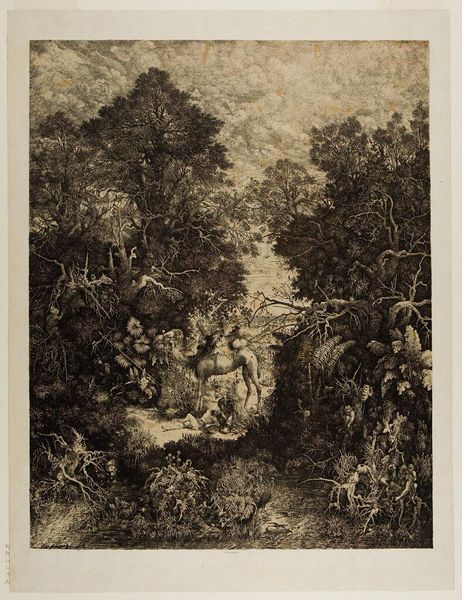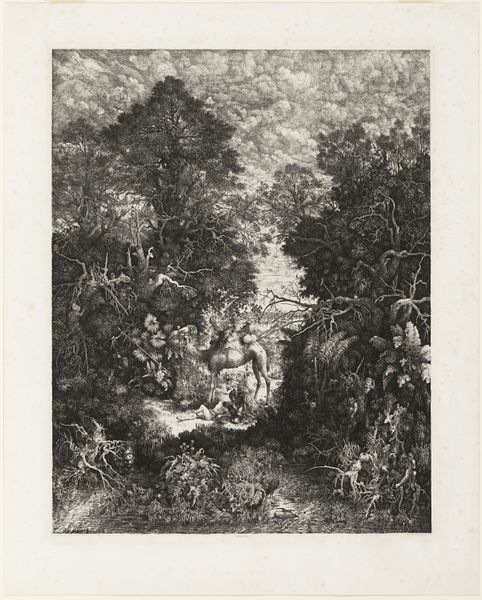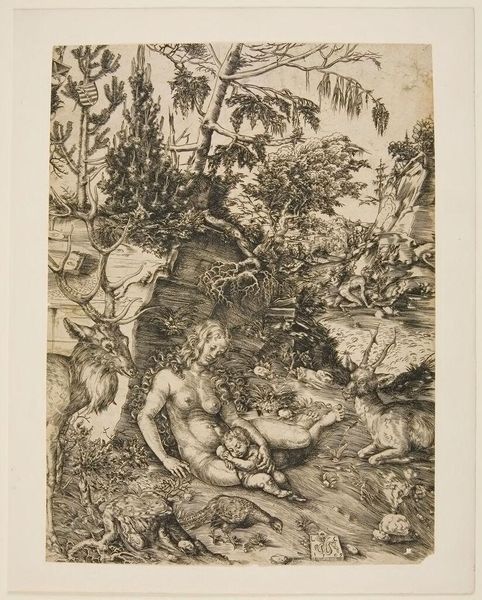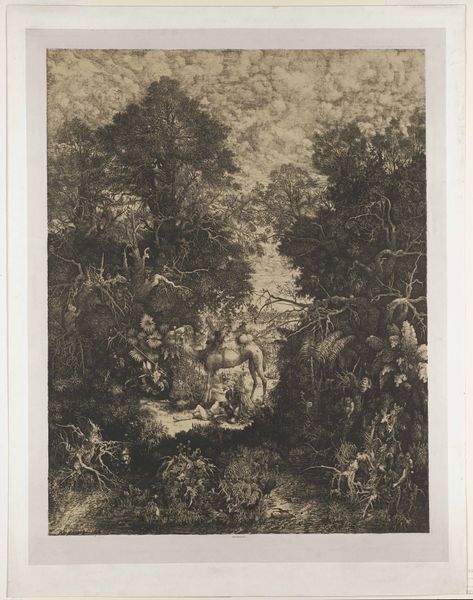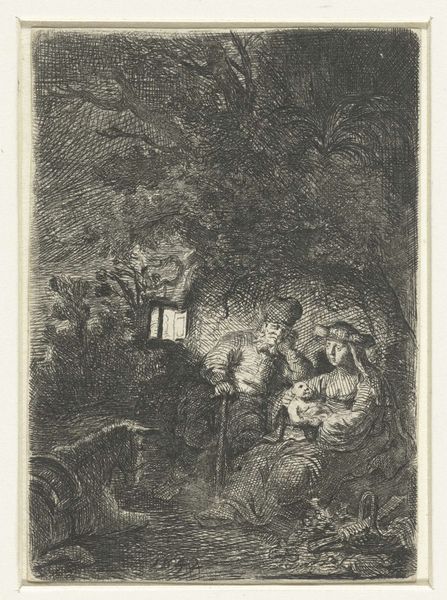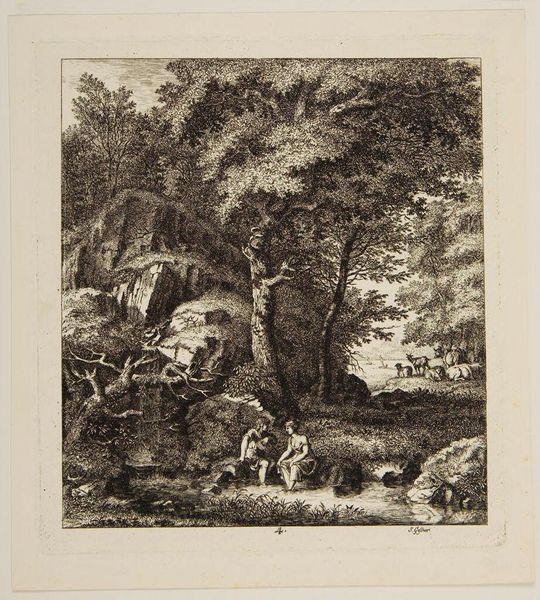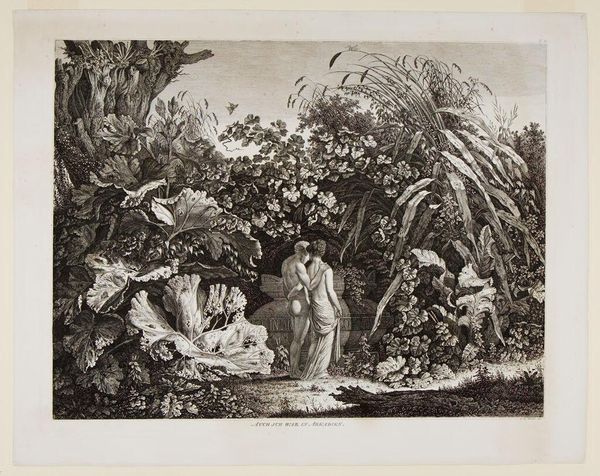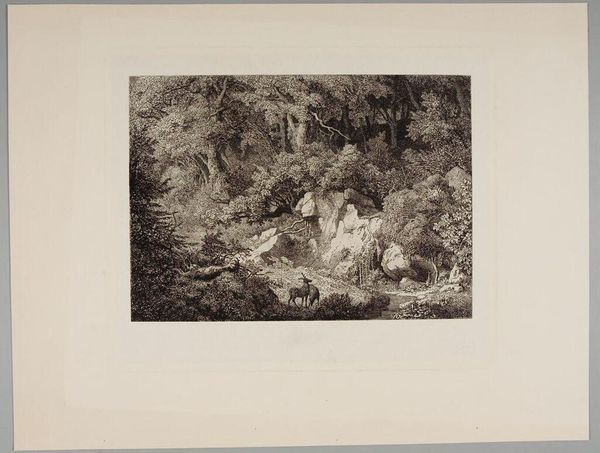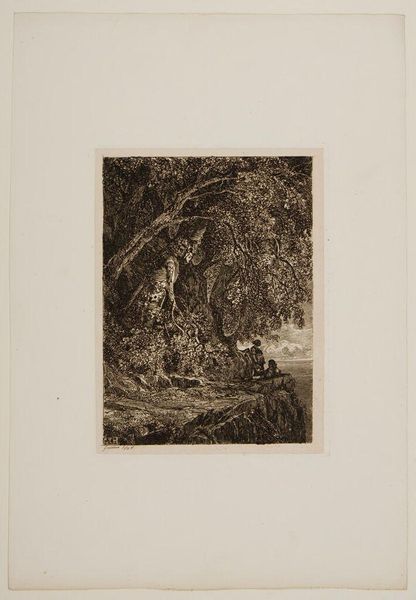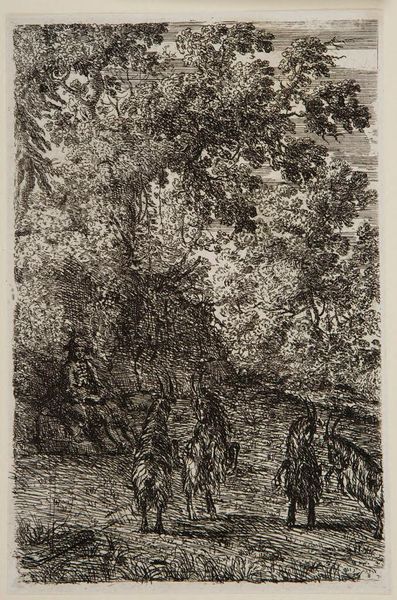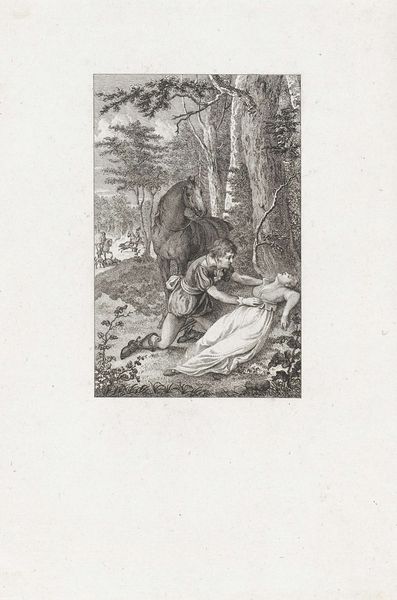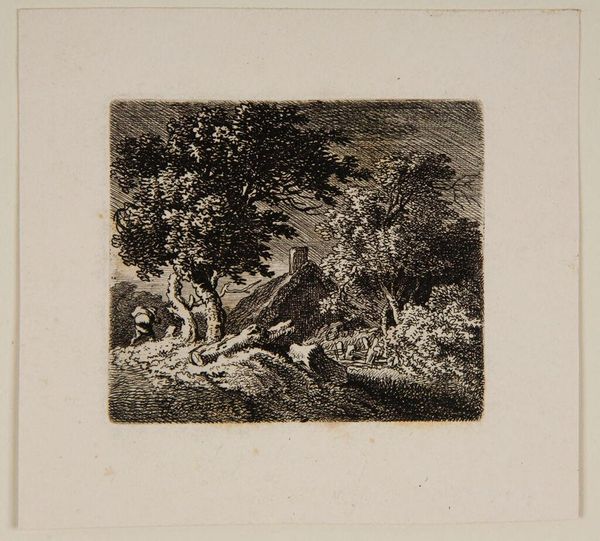
Dimensions: image: 56.6 x 44.2 cm (22 5/16 x 17 3/8 in.) sheet: 62.5 x 48.2 cm (24 5/8 x 19 in.)
Copyright: CC0 1.0
Curator: Bresdin's "The Good Samaritan," housed here at the Harvard Art Museums, presents us with a dense and evocative scene. Editor: It’s a bewildering landscape, isn’t it? Overwhelming in its detail, almost oppressive. The eye struggles to find a resting point amidst the teeming flora. Curator: Indeed. Bresdin often used his art to critique the societal structures and the bourgeoisie, highlighting themes of poverty and marginalization. This narrative print, in that context, becomes a commentary on societal responsibility. Editor: The Good Samaritan story, itself, is deeply symbolic. The camel, for instance, echoes ancient Near Eastern motifs of travel and trade, but also humility. The scene, though chaotic, ultimately conveys a sense of enduring compassion. Curator: And in the 19th-century public sphere, it held particular resonance. Charity became a significant social movement, and art like this would have fueled public discourse about care and morality. Editor: The symbolic language of the work merges with a palpable sense of empathy. That’s what lingers. Curator: Absolutely. Bresdin’s art continues to challenge our notions of empathy and our responsibilities within a larger society.
Comments
No comments
Be the first to comment and join the conversation on the ultimate creative platform.
